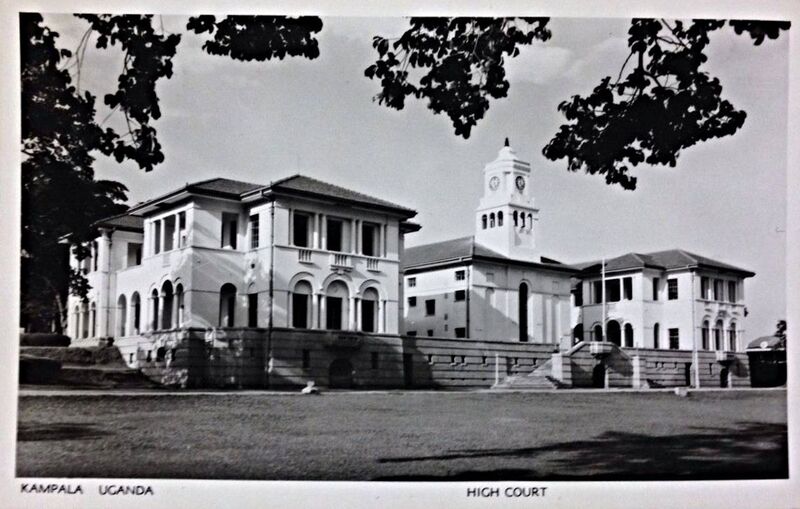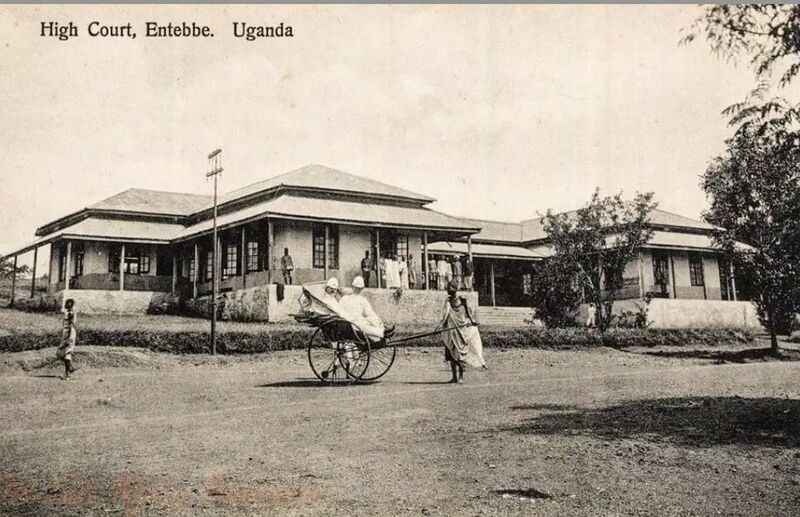High Court of Uganda, Kampala.
The High Court of Uganda was established in 1902. It was the final court of appeal for all subordinate and native courts in colonial Uganda, with jurisdiction over all persons and matters in respect to criminal and civil cases. In Uganda—as in most other British colonies— ‘customary’ legal courts adjudicated disputes between African litigants, while civil courts tried criminal cases and decided litigation among non-Africans. The High Court was the last recourse in cases tried in both customary and civil courts. Its judges were members of the colonial legal service, most of them trained in England or in India. After Uganda’s independence in 1962 the High Court continued to act as Uganda’s highest court under the direction of a Nigerian chief justice. In 1967 a new East African Court of Appeal was constituted to hear appear cases originated from Kenya, Uganda, Tanzania or Zanzibar; but for most litigants the High Court continued to function as the decisive voice in matters of law. It was not until the 1990s that Uganda’s constitution was revised and a new Supreme Court was established to try cases pertaining to Uganda’s presidency.
Scope: The whole archive contains over 70,000 files. Its oldest records date to 1939, and there are a scant set of files from the 1940s and 1950s. The great bulk the collection consists of case files from the 1960s, 70s and 80s. There are 506 boxes that contain civil files, and 237 that contain criminal records. The vast majority of the collection consists of case files containing the first-person testimony of litigants introduced as evidence in the lower courts, filed alongside statements from police, witnesses, and advocates. Some of the material from the lower courts is written in Uganda’s vernacular languages, for they were the language of litigation in ‘customary’ law. But as the case traveled upward through the chain of appeal courts witness statements, petitions, and other documentations were ordinarily translated into English. Alongside this rich material emerging from Uganda’s courtrooms, there is a certain amount of administrative correspondence pertaining to the organization, financing, equipping, and operation of Uganda’s court system.
So far as we are aware there is no other archive of this scale or magnitude that is available for research in the whole of Africa. Historians of legal practice have made use of the archives of local courts, but the small-scale collections that scholars and students have hitherto been able to access pale in comparison with the material held in this archive. Here is a legal archive with a truly national scope, containing case files originating from the whole of Uganda. Here matters of great consequence were argued over and decided. Here are the voices of the African litigants, rendered in the first person, arguing over matters relating to marriage, property, and crime. There will be much in this archive to fertilize scholarship on legal history. But more, there will be much to inspire, instruct, and inform Ugandans as they grapple with the lessons of their tumultuous history.
High Court of Uganda Building-Entebbe.
High Court of Uganda was moved to Kampala in 1930. This photo of the High Court was taken during the colonial period when the court was still in Entebbe. The building, with its British architectural design, was structured and modified to accommodate the proceedings of the High Court then, and many of its architectural features such as the brick columns, wooden jalousie windows, and timber shutters till today are still kept and visible. The old court is still described by Entebbe Residents as “one of the best-built court among the current colonial buildings of the time”. Today, despite a new court was built meters away from the old court, it still remains as a solitary monument to the past. Unfortunately, this old court building was later turned into a meteorological Training school- Entebbe, Located in Entebbe on Plot 11 Kampala road, Entebbe.

